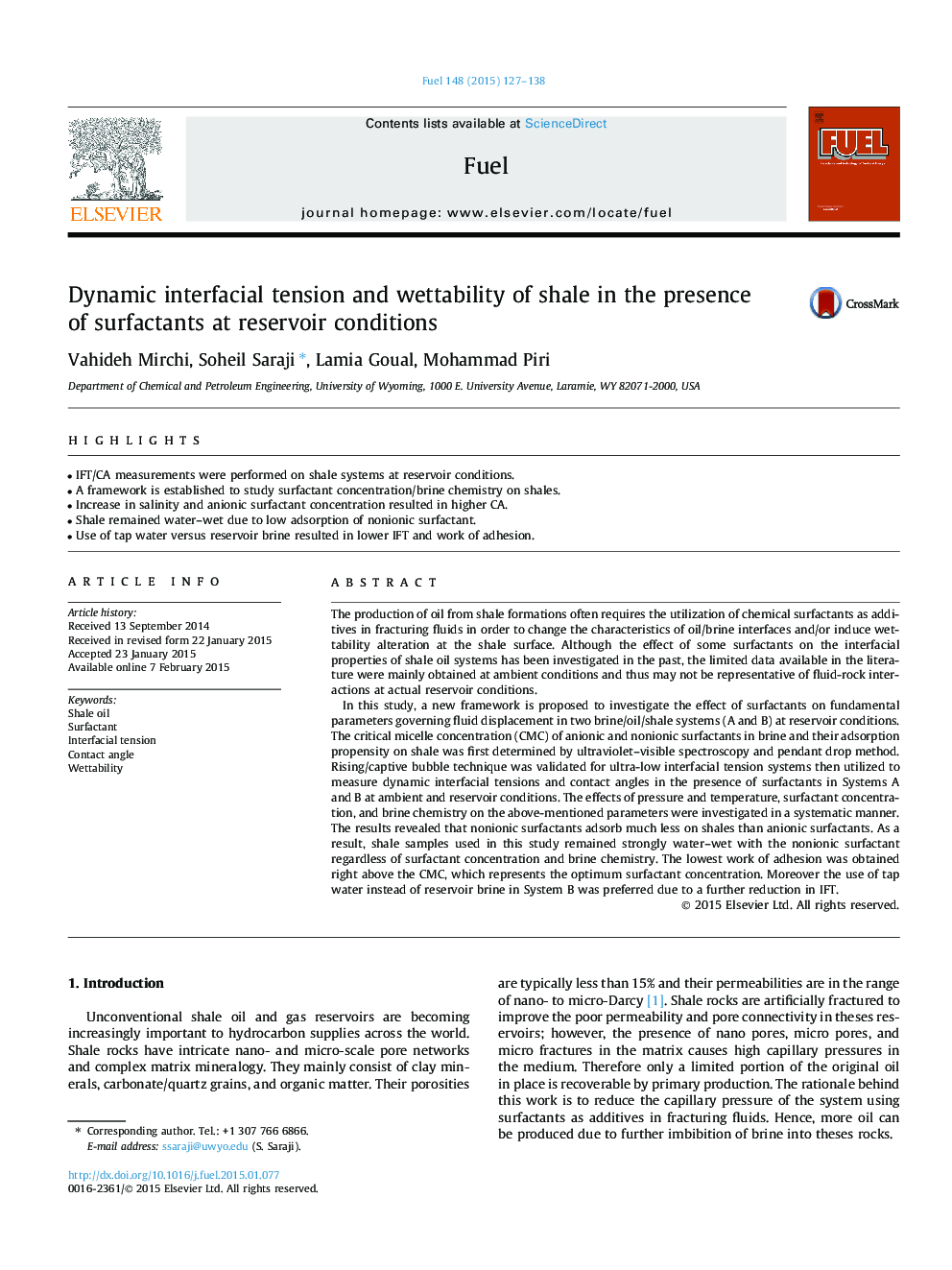| کد مقاله | کد نشریه | سال انتشار | مقاله انگلیسی | نسخه تمام متن |
|---|---|---|---|---|
| 205919 | 461128 | 2015 | 12 صفحه PDF | دانلود رایگان |
• IFT/CA measurements were performed on shale systems at reservoir conditions.
• A framework is established to study surfactant concentration/brine chemistry on shales.
• Increase in salinity and anionic surfactant concentration resulted in higher CA.
• Shale remained water–wet due to low adsorption of nonionic surfactant.
• Use of tap water versus reservoir brine resulted in lower IFT and work of adhesion.
The production of oil from shale formations often requires the utilization of chemical surfactants as additives in fracturing fluids in order to change the characteristics of oil/brine interfaces and/or induce wettability alteration at the shale surface. Although the effect of some surfactants on the interfacial properties of shale oil systems has been investigated in the past, the limited data available in the literature were mainly obtained at ambient conditions and thus may not be representative of fluid-rock interactions at actual reservoir conditions.In this study, a new framework is proposed to investigate the effect of surfactants on fundamental parameters governing fluid displacement in two brine/oil/shale systems (A and B) at reservoir conditions. The critical micelle concentration (CMC) of anionic and nonionic surfactants in brine and their adsorption propensity on shale was first determined by ultraviolet–visible spectroscopy and pendant drop method. Rising/captive bubble technique was validated for ultra-low interfacial tension systems then utilized to measure dynamic interfacial tensions and contact angles in the presence of surfactants in Systems A and B at ambient and reservoir conditions. The effects of pressure and temperature, surfactant concentration, and brine chemistry on the above-mentioned parameters were investigated in a systematic manner. The results revealed that nonionic surfactants adsorb much less on shales than anionic surfactants. As a result, shale samples used in this study remained strongly water–wet with the nonionic surfactant regardless of surfactant concentration and brine chemistry. The lowest work of adhesion was obtained right above the CMC, which represents the optimum surfactant concentration. Moreover the use of tap water instead of reservoir brine in System B was preferred due to a further reduction in IFT.
Journal: Fuel - Volume 148, 15 May 2015, Pages 127–138
